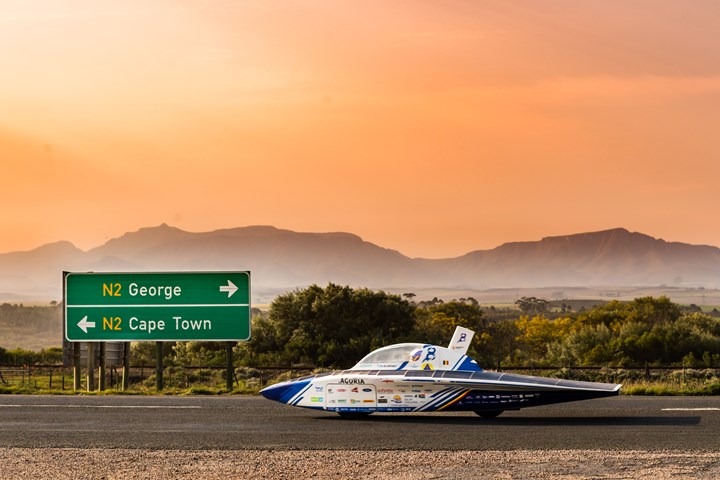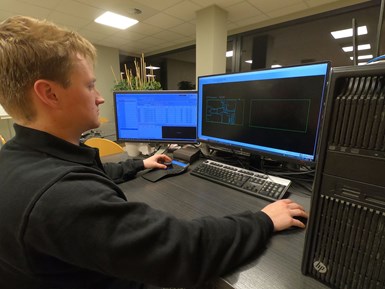Innoptus Solar Team uses Jetcam software to optimize production of solar vehicle
The world title-holding, Belgium racing team is producing its tenth composites-intensive solar car using Jetcam Expert nesting software.

Jetcam International (Monaco) announces that this year, the Innoptus Solar Team has been using Jetcam Expert as the exclusive nesting software to produce its tenth solar vehicle. The group of Belgian engineers currently hold the world title in solar racing and are seeking to prolong their success by creating the most innovative solar powered car in 2023.
Jetcam is the the team’s partner for CAD/CAM, nesting and Industry 4.0 IoT software. The nesting technology manages two main materials that are cut on cutting machines: carbon fiber prepreg and foam core materials. Two separate cutters are operated between Jetcam’s production partner facilities, Indupol International (Arendonk, Belgium) and Sabca (Brussels, Belgium).

According to Jetcam, Jetcam Expert software has provided a key advantage for the Innoptus Solar Team, in that it has quickly generated cutting files for the different machines used. The bite fed cutter at Indupol requires G-Code which is generated by the software while the prepreg cutting machine at Sabca uses nested DFX files. After the installation of Jetcam Expert, which was handled remotely by a Jetcam engineer in the United States, a short tutorial was then recorded that helped distribute and deskill the operating process for the Innoptus Solar Team.
The team also used Jetcam University, an award-winning online video tutorials platform, to search for specific functionality such as mirroring flat patterns in Jetcame Order Controller. Jetcam says this assistance helped the Innoptus Solar Team generate nest files in minutes, and to cut replacement plies during the lamination process, which may be necessary if a defect is found in a ply. The high-performance nesting algorithm is also said to ensure minimal wastage of premium materials used during the manufacturing process.
“I showed Jetcam to one of the designers at Indupol, and he was impressed by how quickly and efficiently the plies are nested, as he does this by hand in very old software. The material savings have also been very handy as it has allowed us to use our expensive Rohacell core material very efficiently,” says Dries Sanders, structural engineer and head of mechanical engineering for the Innoptus Solar Team.
Jetcam was also able to provide swift support when additional configuration was required to drive a different cutter. Sanders adds, “A new postprocessor was required to generate G-Code for a different machine, which was recently remotely installed by a Jetcam technical engineer. He was also quickly available for support if we had further questions.”
Related Content
-
Large-format 3D printing enables toolless, rapid production for AUVs
Dive Technologies started by 3D printing prototypes of its composite autonomous underwater vehicles, but AM became the solution for customizable, toolless production.
-
Jeep all-composite roof receivers achieve steel performance at low mass
Ultrashort carbon fiber/PPA replaces steel on rooftop brackets to hold Jeep soft tops, hardtops.
-
Sulapac introduces Sulapac Flow 1.7 to replace PLA, ABS and PP in FDM, FGF
Available as filament and granules for extrusion, new wood composite matches properties yet is compostable, eliminates microplastics and reduces carbon footprint.

.jpg;width=70;height=70;mode=crop)














